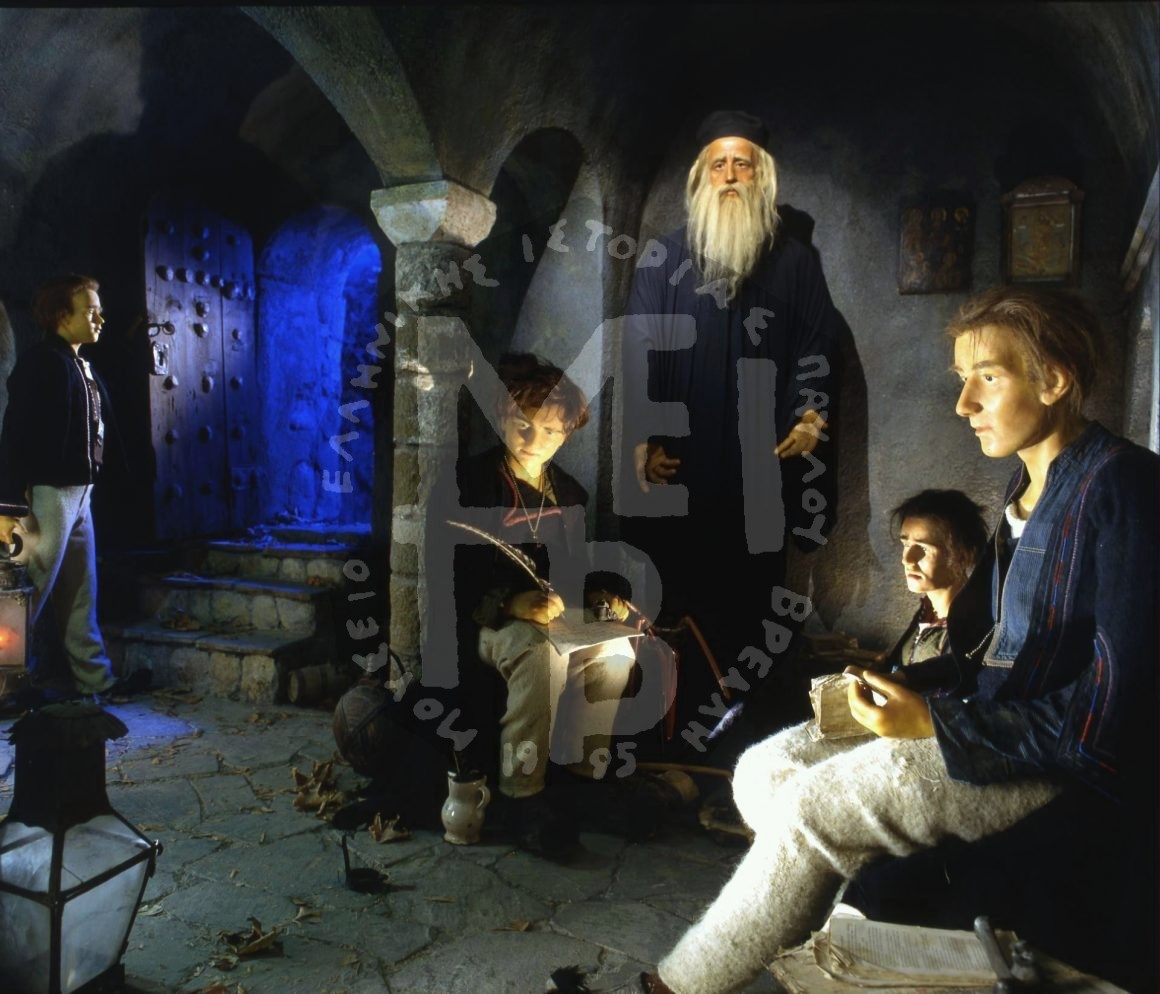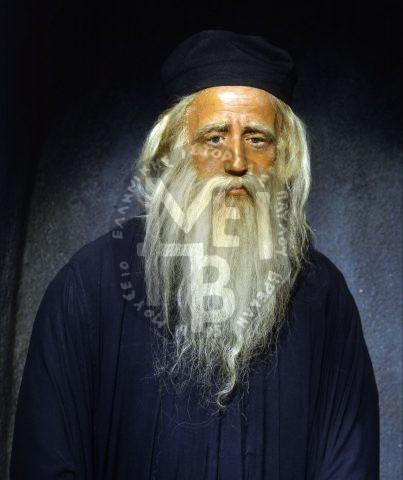I have chosen ‘the Clandestine School’ to be my first theme as a tribute to those who kept our language and National identity during the first, dark times of the Turkish occupation.
The room is as we get in and small. I made the stone walls and the ceilings look old. Its main function is to make the visitor’s eyesight adjust to the dim light of the following rooms. We keep going down the steps. The room turns small, hidden, and clandestine. Turning down the last two triangular steps, we step on a small, paved room. It is roofed with a large arch. On the right, I develop little blind arches, niches and rocks on the ground, at various heights so as to depict the depth and the buttressing of this underground place. In front of us, a big arch lays open revealing the site of the Clandestine School.
This is not a myth. Since back 1581 we are informed of the existence of 10 clandestine schools in Constantinople, 4 on the island of Chios, 10 in Peloponnesus and 50 in other places with monks and priests as teachers. All of them were under the protection of our Church. It is a unique phenomenon in all nations for children to be taught at night. Through so many centuries of slavery, the Greeks could not possibly have maintained their Religion and language.
Half educated priests and monks talked to the children of Jesus Christ and Homeland; they consoled them and gave them hope. Their first books were Ecclesiastical volumes like the Book of Eight tones and the Book of Psalms. The Greeks living abroad were allowed to print and send only religious books to the enslaved homeland. It was the Church, under the Patriarch of Constantinople, Cyril Loukaris that founded the first printer’s in 1627. It was the first in the East. There were others, too, in Iassio in 1680, in Bucharest and Moschopolis in 1710 under the monk Gregory Konstandinidis. In 1798, the Patriarch Gregory the fifth founded ‘the Printer’s of the Nation’ in the Patriarchate.
Objectively speaking, the place is small. I divide it into two uneven surfaces (naves). One leads to a blind arch while the other to a small arched exit door in case the students needed to escape at an emergency. The studs of this door were molded with lead and antimony. On the right hand side of the big nave, I created four little blind arches, similar one to the other with flat drums. I wanted to make the background look bigger both aesthetically and prospectively with the aim of making the central blind arch appear larger, since I would place the priest-teacher standing there. In this way I show off the vertical figure whose position stands out in the composition as a whole.
The Man is my main unit of measurement. The little objects I have placed here actually work as such. The optical cone of the visitor is generally formed at a distance equal to that of the height of the room so that the visitor can notice the details at a horizontal axis of an angle of 45 degrees.
The materials used include neurometal, iron netting and cement mortar. The patinas were made with plastic, acrylic, powder, temperas and oil paints and other.
Some of the students’ clothes were sewed while others are altered or bought from second-hand stores in Ioannina.
The faces come from models in my workshop in Athens and Ioannina. In 1954-55 I worked on the figure of the teacher-priest who was from Konitsa villages. The rest of the children are from the mountains or plains while the one standing up is my son.
I believed in that composition, I studied it and loved it. It was also the reason I started experimenting on the rendering of historical persons and events. During the time I worked at the university in Ioannina, I met a number of colleagues, both historians and language professors. I have always believed that each one of us can contribute to the knowledge and education of others. My wish has been to be able to render, as a sculptor, in my way, the recreation of scenes, events and figures of the Greek History.
Avoiding mistakes like the conversion of functional buildings with character irrelevant to that of a museum, I created from scratch a place of my own in Mouzakaioi village in Ioannina. I experimented on many materials but ended up to wax, since it portrays the color hues of the human skin and the muscles underneath better. I began to show my colleagues my work… and the rest is history!
The standing figure of the teacher-priest makes time stop for a while. The children stopped writing and reading. They are meditating…


